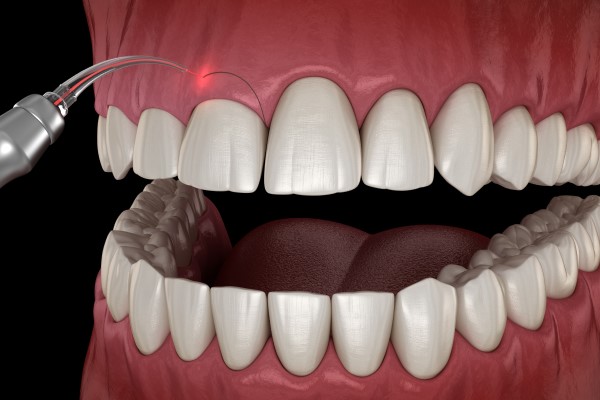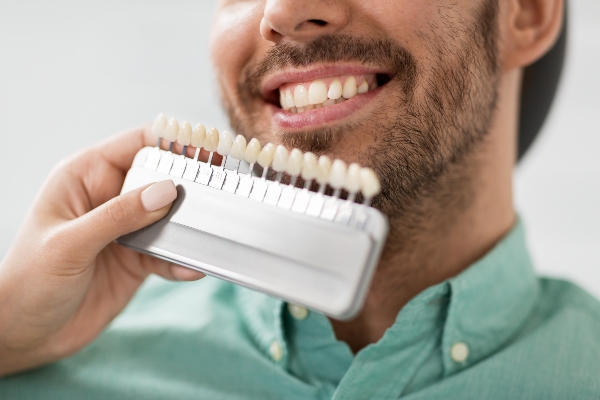Receding Gums: Will I Need to Get a Gum Graft?

Receding gums expose the teeth roots, making them vulnerable to heat, cold, pressure, corrosion, and harmful mouth bacteria. The exposure also makes your teeth appear longer than they should be, which can affect the look of your smile.
A dentist might recommend gum grafting to correct gum recession. Here is how to know if a gum graft procedure is right for you.
Receding gums: Causes and treatment
Gum recession is a common effect of gum disease, but it can also result from vigorous brushing or aging. Gums can even pull back from the teeth because of ill-fitting partial dentures or orthodontic appliances. To improve dental health and the look of a patient’s smile, a dentist might perform one of the following types of gum grafts.
Connective tissue graft
This is a type of gum graft in which the dentist grafts connective tissue from the roof of the mouth to the gums. The dentist will lift a small patch of skin from the roof of the mouth, remove the donor tissue, and reattach the flap of skin. They will then attach the donor tissue to the gums. A dentist will use this procedure to correct a moderate level of receding gums.
Free gum graft
WIth this type of graft, the dentist removes tissue from the surface of the palate and attaches it to the gums. They will choose this option in cases of severe gum recession.
Pedicle graft
This procedure involves harvesting donor tissue from adjacent gum tissues that are in good condition. Dentists use this type of gum graft for patients with mild gum recession.
In some cases, a dentist will recommend that their patient receive donor tissue from an external source. This limits the number of surgical sites that the patient has to deal with during recovery.
When dentists recommend gum graft procedures for receding gums
A good candidate for a gum graft needs to have receding gums and meet most of the following criteria.
1. Have severe gum disease
Gum grafts are common components of more extensive treatment plans that address gum disease. The graft tissue closes gum pockets and covers the tooth roots, protecting them from injury, corrosion, and infection. A gum graft stimulates gum tissue regeneration and makes the patient’s oral hygiene routine easier and more effective.
2. Be in need of gum contouring
Gum contouring is a cosmetic procedure with several oral health benefits. Adding graft tissue to uneven gums creates a symmetrical gum line that is pleasing to the eye. The procedure also corrects teeth that look overly long due to age or other factors.
3. Be healthy enough to undergo the procedure
A dentist only clears their patient for a procedure that is safe for that particular individual. They will consult with the person’s physician to confirm that they are healthy enough to undergo a minor surgical procedure. This minimizes the chances of complications during and after the gum graft.
Frequently asked questions about gum grafts for receding gums
Many patients are thinking about getting gum grafts to address their receding gums. Here are the answers to frequently asked questions about the procedure.
What is a gum graft?
A gum graft is a clinical procedure where tissue is taken from another part of the mouth or body and grafted onto the gums. This can help cover up exposed roots and improve the appearance of the smile.
Why would I need a gum graft?
Gum recession develops when the gum tissue around the teeth pulls back, exposing more of the tooth root. This can happen for various reasons, like genetics, aggressive brushing, or periodontal disease. Gum grafts can help protect the teeth from further damage by covering up exposed roots and preventing bacteria from getting in.
How is a gum graft performed?
There are three major types of gum grafts: autogenous, allogeneic, and synthetic.
- Autogenous grafts involve taking tissue from the patient's mouth to use for the graft; it is typically taken from the roof of the mouth
- Allogeneic grafts use tissue from another human donor; this type of graft is less common because there is a risk of rejection
- Synthetic grafts use artificial materials to create the graft; this option is less common due to the risk of infection
Your dentist will decide which type of gum graft is best for the patient based on their individual case.
What can I expect after a gum graft?
After a gum graft, the patient can expect a bit of pain and inflammation in the treated area. The dentist will likely prescribe pain medication to help manage any discomfort. Patients should also avoid chewing on that side of their mouth for a few weeks to allow the graft to heal properly.
The health of your gums is a priority at My Saratoga Dentist PLLC
Our dentist offers preventative and corrective dental treatments that can help keep your gum tissues healthy. Give us a call or visit our Saratoga Springs clinic to set up an appointment.
Request an appointment here: https://www.mysaratogadentist.com or call My Saratoga Dentist PLLC at (518) 675-3094 for an appointment in our Saratoga Springs office.
Check out what others are saying about our dental services on Yelp: I Think My Gums Are Receding in Saratoga Springs, NY.
Recent Posts
Gum grafting is a dental procedure that involves grafting new gum tissue to improve the gum line and add more support for teeth. This review discusses who makes an ideal candidate for gum grafting and offers additional insights into how the treatment process works so you can make an informed decision as to whether or…
Having receding gums can be a serious concern for your oral health and overall wellness. This can also be a cosmetic issue and hinder your smile. If your gums are receding, make sure you get in touch with your dentist. There are some treatments available to help correct this problem. You can also change your…
When it comes to oral health, the condition of the gums can be key. Proper brushing, flossing and the prevention of gingivitis can support good gum health; however, when individuals suffer from crooked teeth, an underbite or an overbite and choose to get braces, this may cause problems with the gingiva. Dental patients who want…
Gum grafting is a surgical procedure performed to correct the effects of gum recession. It is also used in cosmetic dentistry to improve the appearance of the gums. The procedure is quick and relatively simple and it involves the surgeon removing healthy gum tissue from the roof of the mouth to rebuild the gums where…


